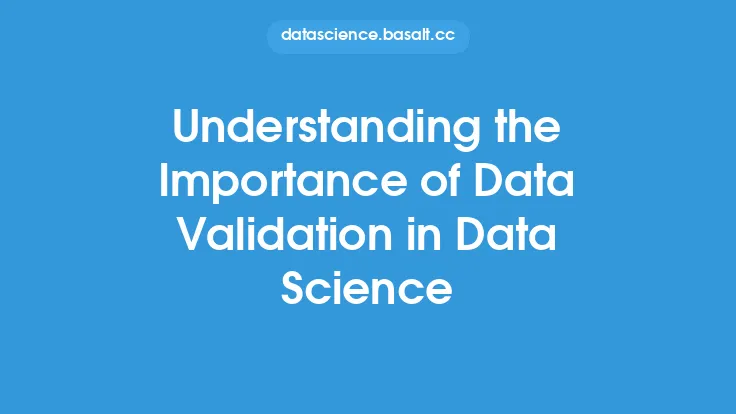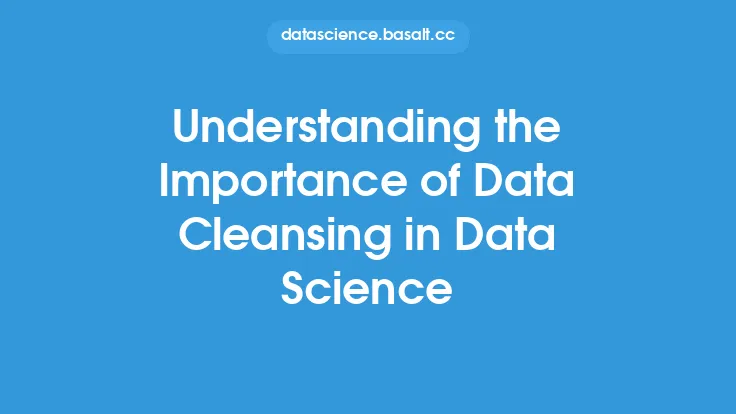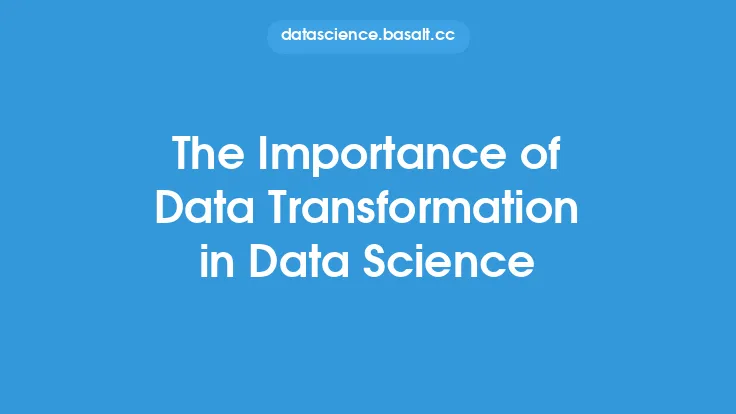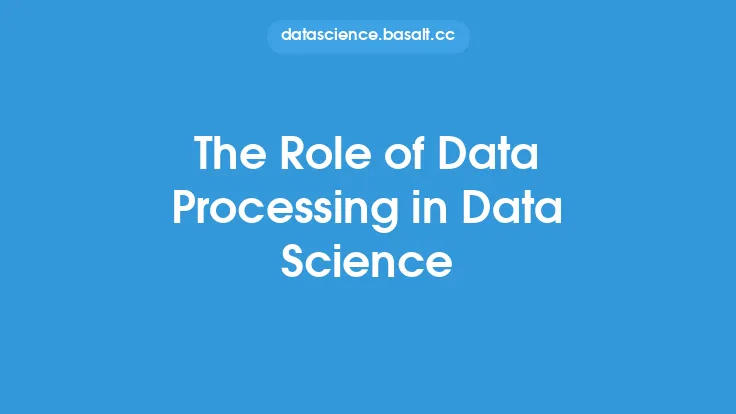Data preparation is a fundamental step in the data science workflow, and its importance cannot be overstated. It is the process of transforming raw data into a clean, organized, and structured format that can be used for analysis, modeling, and visualization. The goal of data preparation is to ensure that the data is accurate, complete, and consistent, and that it can be easily accessed and manipulated by data scientists and other stakeholders. In this article, we will explore the critical role that data preparation plays in the data science workflow, and why it is essential for extracting insights and value from data.
Introduction to Data Preparation
Data preparation involves a range of activities, including data cleaning, data transformation, data integration, and data reduction. Data cleaning involves identifying and correcting errors, inconsistencies, and inaccuracies in the data, such as missing or duplicate values, outliers, and invalid data formats. Data transformation involves converting data from one format to another, such as aggregating data, grouping data, and creating new variables. Data integration involves combining data from multiple sources, such as databases, files, and external data providers. Data reduction involves selecting a subset of the data that is most relevant to the analysis, such as sampling, filtering, and aggregating data.
The Importance of Data Preparation
Data preparation is critical because it directly affects the quality and accuracy of the insights and models that are generated from the data. Poor data quality can lead to biased models, incorrect conclusions, and poor decision-making. On the other hand, high-quality data can lead to more accurate models, better decision-making, and increased business value. Data preparation is also important because it enables data scientists to focus on higher-level tasks, such as modeling, visualization, and interpretation, rather than spending time cleaning and preparing the data.
Data Preparation Techniques
There are several data preparation techniques that are commonly used in data science, including data profiling, data quality checking, data transformation, and data feature engineering. Data profiling involves analyzing the distribution of values in a dataset, such as the mean, median, and standard deviation, to identify patterns and anomalies. Data quality checking involves verifying the accuracy and completeness of the data, such as checking for missing values, duplicates, and invalid data formats. Data transformation involves converting data from one format to another, such as aggregating data, grouping data, and creating new variables. Data feature engineering involves creating new variables or features from existing ones, such as extracting keywords from text data or creating new variables from existing ones.
Data Preparation Tools and Technologies
There are several data preparation tools and technologies that are commonly used in data science, including spreadsheet software, such as Microsoft Excel, data integration tools, such as Informatica and Talend, data transformation tools, such as Trifacta and DataRobot, and data science platforms, such as Python, R, and SQL. These tools and technologies provide a range of features and functionalities, such as data cleaning, data transformation, data integration, and data visualization, that enable data scientists to prepare and analyze data efficiently and effectively.
Challenges and Opportunities in Data Preparation
Data preparation is a challenging task, especially when dealing with large and complex datasets. Some of the common challenges in data preparation include data quality issues, such as missing or duplicate values, data integration issues, such as combining data from multiple sources, and data transformation issues, such as converting data from one format to another. However, data preparation also presents several opportunities, such as improving data quality, increasing efficiency, and enabling more accurate and effective analysis and modeling.
Best Practices for Data Preparation
There are several best practices for data preparation that can help ensure high-quality data and efficient data preparation processes. These include documenting data sources and metadata, using data quality checks and data validation, using data transformation and data feature engineering techniques, and using data preparation tools and technologies. Additionally, data scientists should also consider using data governance and data management practices, such as data cataloging and data lineage, to ensure that data is properly managed and maintained throughout the data science workflow.
Conclusion
In conclusion, data preparation is a critical step in the data science workflow, and its importance cannot be overstated. It involves a range of activities, including data cleaning, data transformation, data integration, and data reduction, and requires a range of skills and techniques, including data profiling, data quality checking, data transformation, and data feature engineering. By using data preparation tools and technologies, and following best practices for data preparation, data scientists can ensure high-quality data and efficient data preparation processes, and extract insights and value from data.





